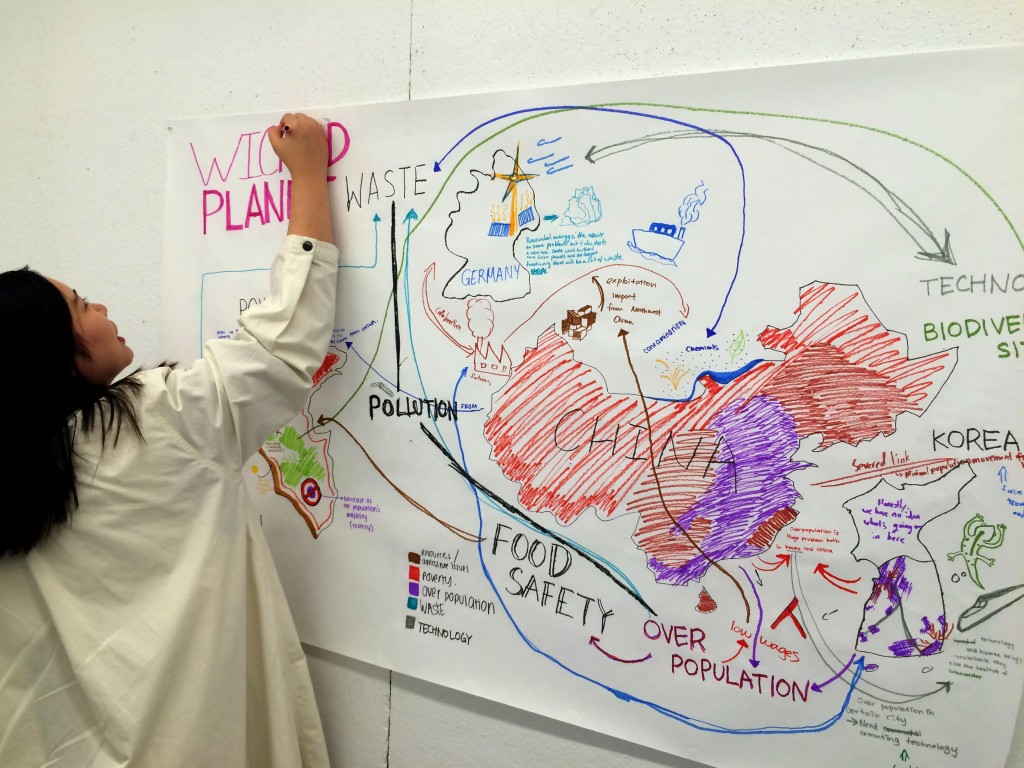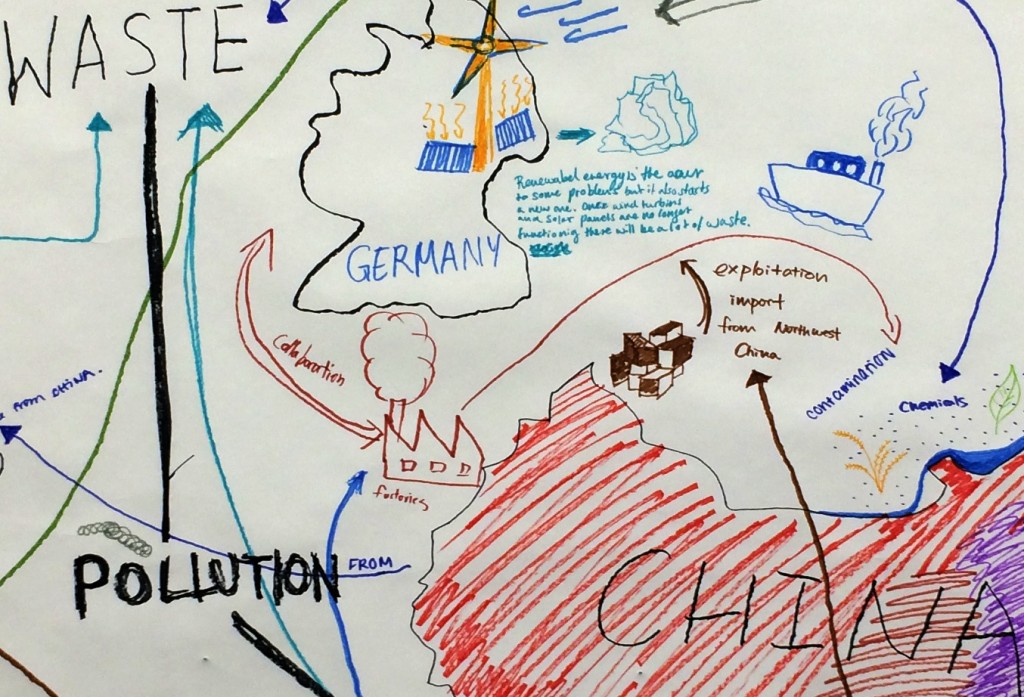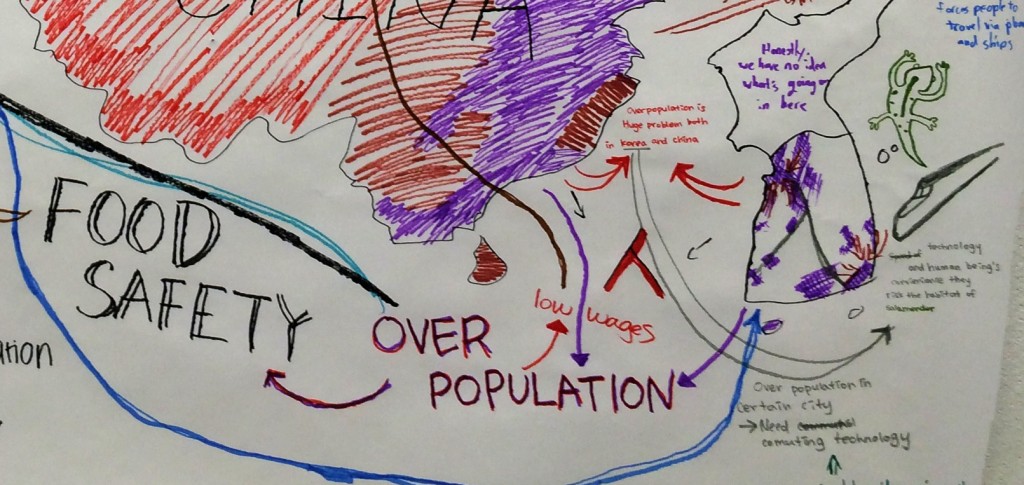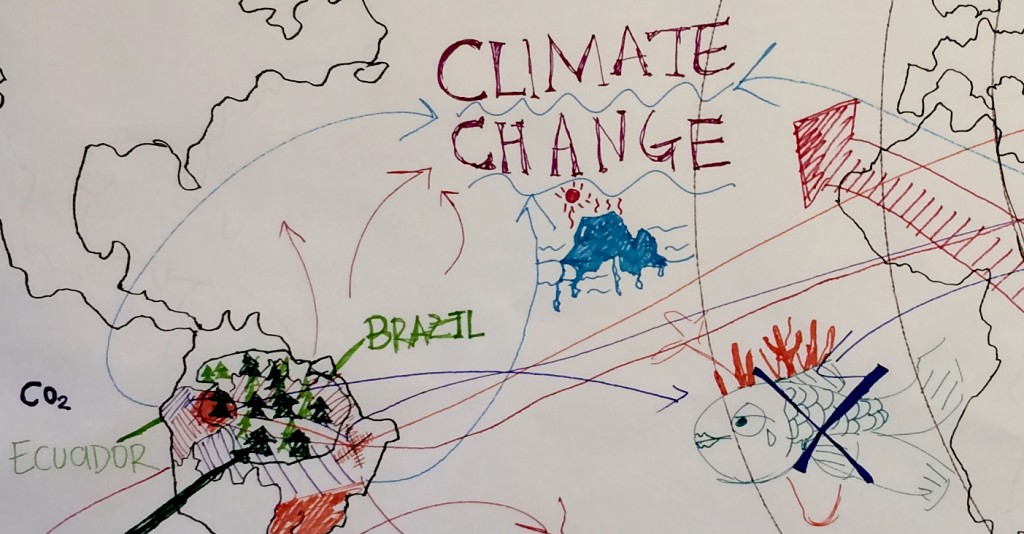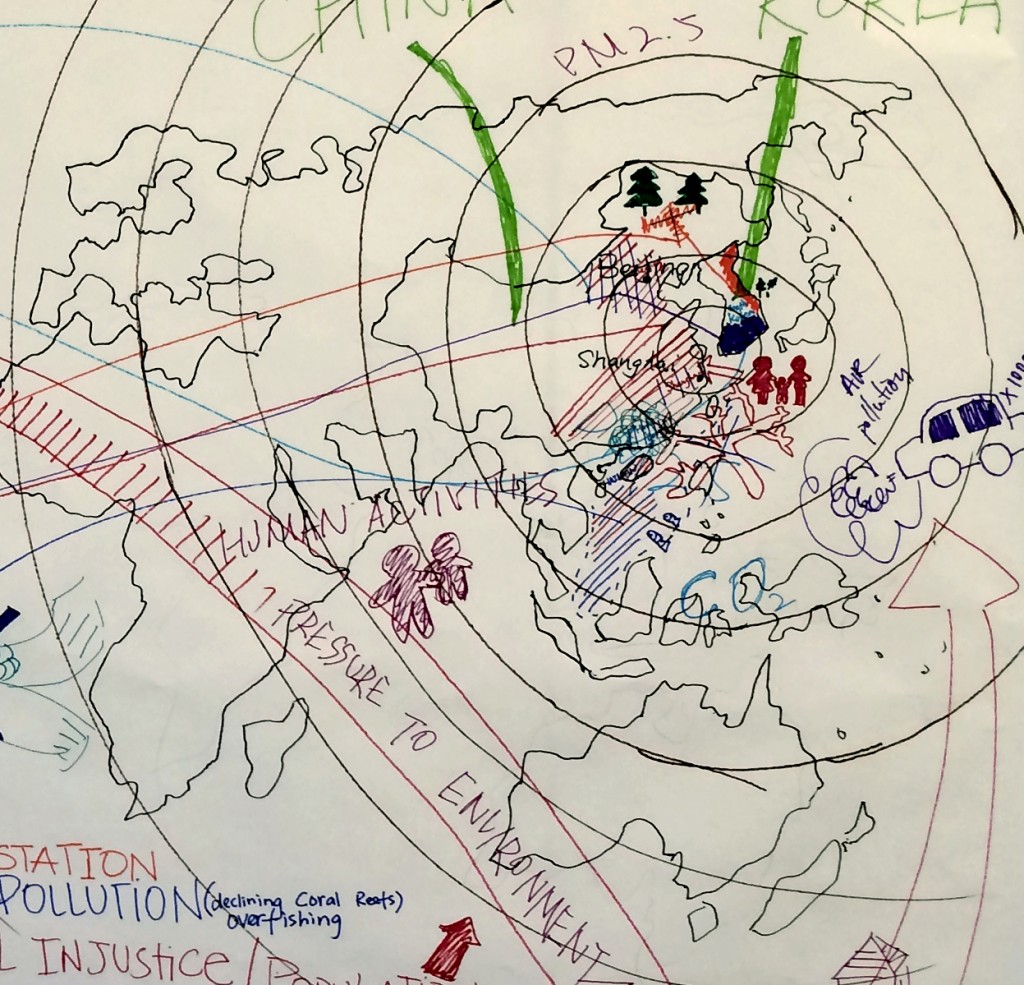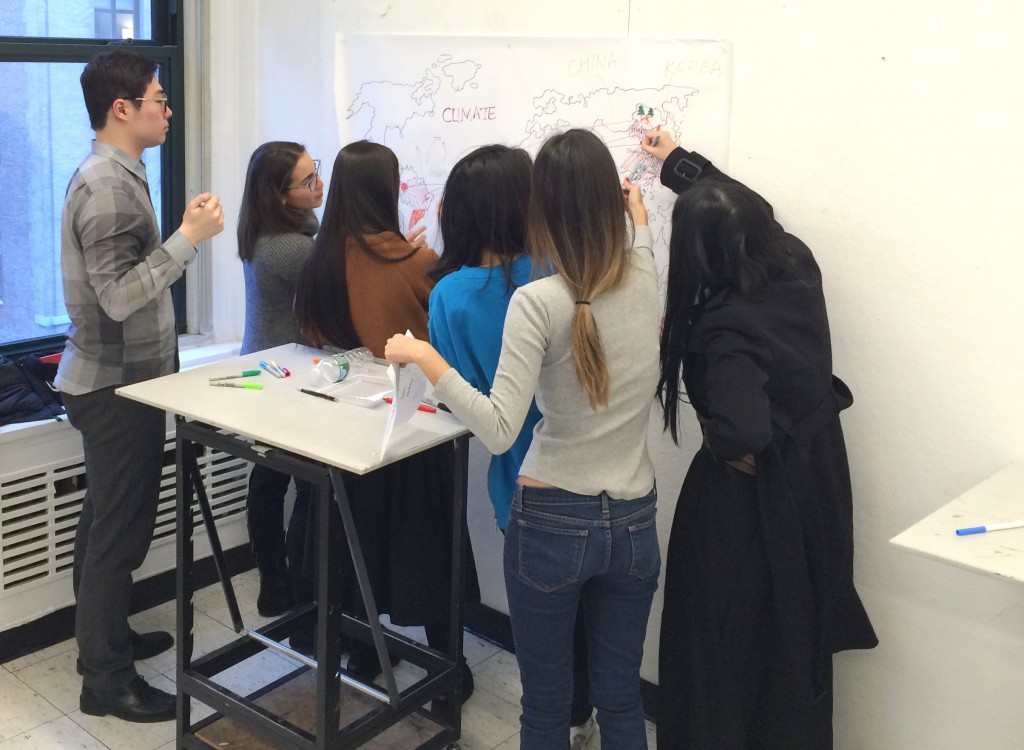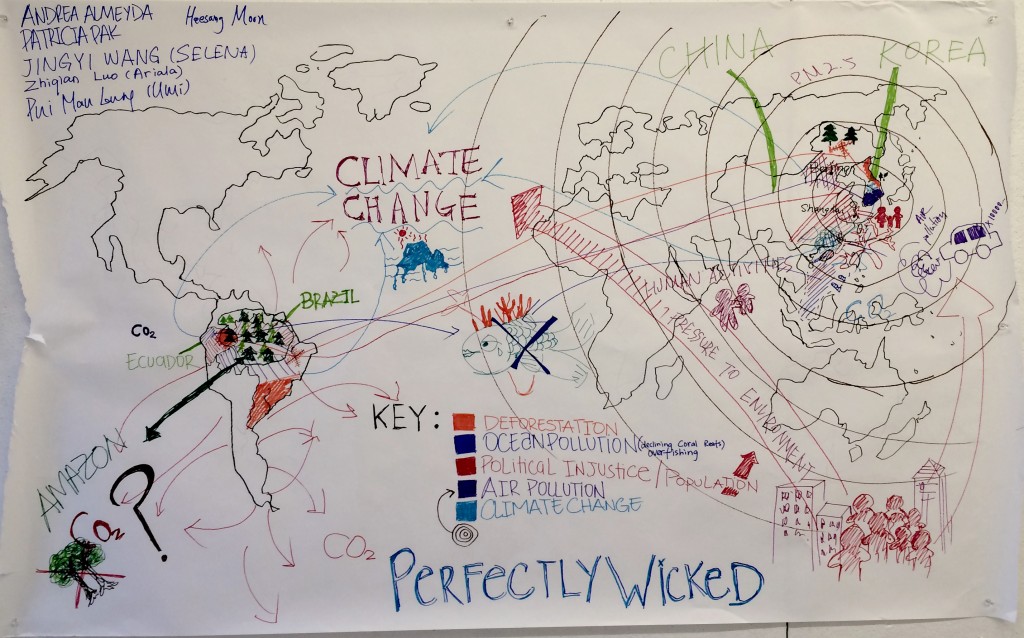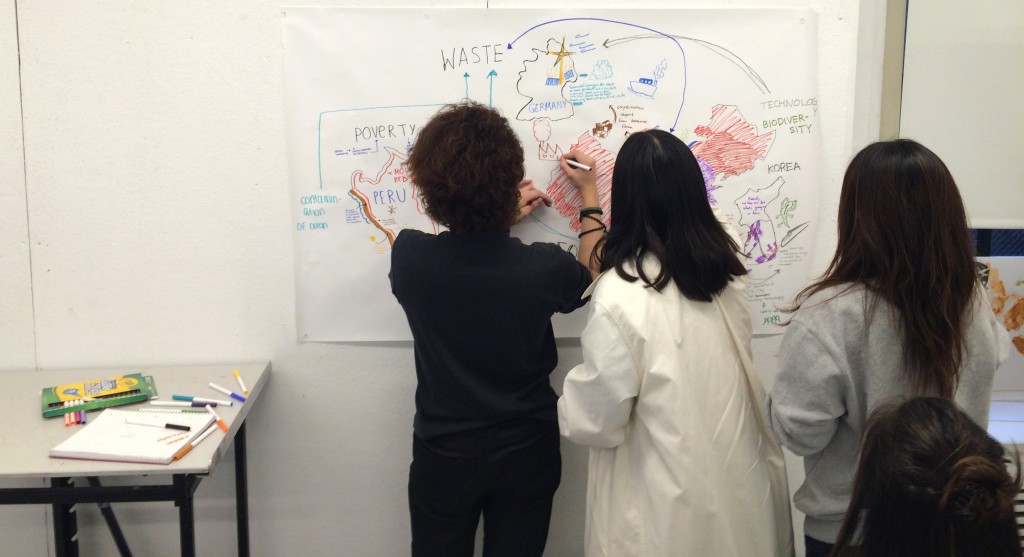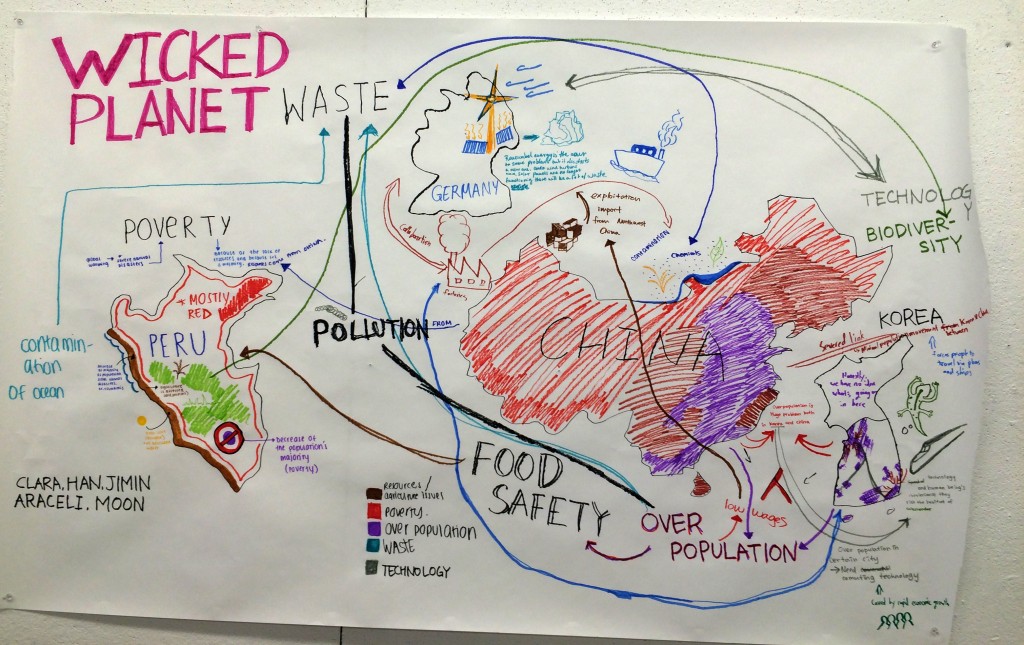>> TIPS for teaching LS:
General Suggestions (from CTE department)
Clear instructions- always model
Clear assessment criteria
Clear objectives
Break down texts, tasks into smaller chunks and steps and check in along the way.
Make as multi-modal as much as possible
Integrate the global perspective as much as possible.
>> SPECIFIC TIPS for teaching LS sections of Sustainable Systems:
I’ve altered my teaching practice in significant ways for LS sections. Changes include:
– Project and discuss today’s agenda at the beginning of each class
– Arrange room so we are closer, no rows
– I try to move around the room more and not stay stationed by the media console
– Post PDFs of lectures and slides on Canvas for students to access. Several international students have expressed appreciation for being able to look at/review what was shared in class.
– Repeating and integrating core vocabulary throughout semester
– Reduced the number of readings, shortened their length and extended the time spent in class discussing what is assigned. I’ve also started to number the paragraphs of any article longer than one page for ease of reference and for breaking up longer texts into group projects (2-3 students read paragraphs #1-5. etc. and then report back to the group).
– Assign drawing projects in response to videos instead of always requiring written responses
– Rewritten lectures and project design briefs to be shorter and more specific
– Use of rubrics for large projects (break down points for research, presentation, fabrication and documentation).
– Share assignments/homework verbally, in print and via Keynote/PowerPoint in-class AND on Canvas
– Reach out to students who are quiet in large groups or are behind in work. Many students tend to say “yes, I understand” in-class but actually appreciate further explanation.
– Integrate a global perspective into my lecture content — and encourage students to reflect and share about their home countries through their creative work
– Student-led activities and critiques. In past semesters, I’ve typically held group crits (with all students presenting one by one to the entire class). Now I try to only do this for final project presentations. Now I have students meet in small groups and discuss their work together and provide each other with written feedback BEFORE coming together as group. I then follow up with specific feedback to each student by email or in writing.
– Integrate tasks into audio/visual presentations. Activities and tasks associated with watching and listening have greatly increased student participation and engagement.
– Require students to reflect on each of their major projects in their field notebooks. I asked students think about how their work was received in class and consider how they would do things differently next time.
Ongoing challenges:
Overall I want to create more small projects of 20-30 minutes (lecture w/audio/visuals, drawing, reading, making etc.). This helps keep energy and attention sustained throughout a class period (as opposed to lectures and projects that last over one hour).
The content of Sustainable Systems can be rather overwhelming (climate change, extinction etc.). I feel it’s an ongoing challenge, though extremely important, to guide students into the content that invites their creative response — without triggering guilt, depression etc. The ideal scenario is one where the course content feels contemporary and relevant to their lives, rather than outdated environmentalism.
Talk less, elicit more from students — rather than me telling them what I think they need to know.
>> A course glossary of key vocabulary and concepts, organized by unit. Attaining these terms and concepts should be an explicit objective of the course. Teachers should incorporate tasks that introduce, practice and use these words.
In Sustainable Systems there are four key themes: AIR/CLIMATE CHANGE, WATER, MATERIALS, and ENERGY
In relation to these four themes we explore the following key vocabulary and phrases:
OVERALL:
1) Designing for ever-changing conditions / Designing for Change
2) Complex systems thinking
3) Intentional Observation/ Observing Change
4) Resiliency as creativity
WATER:
5) Storm Surge
6) Drought
7) Coastal vulnerability
MATERIALS:
8) No Zero (degrees of impact)
9) Long Life Design
10) Design for Deep Time
11) Anthropocene
AIR/CLIMATE CHANGE:
12) Wicked Problems
13) Sixth Extinction
14) Fifth Season
15) Social Resilience
16) Designing for the non-human
ENERGY:
17) Designing for Limits
> 3 examples of a vocabulary practice activity
1) Read the following article, Signs of a Human Age. Research and write a definition of the Anthropocene, include 10 planetary systems that are affected by it.
2) Write a few sentences that describe a specific, material example of a wicked problem in your home country (such as a particular object, material, building project, dam, mine, type of agricultural practice, loss of species etc.)? Include images in your post and cite your references. Come to class prepared to present this example to your peers.
Welcome to the Anthropocene video + AnthroVocab exercise PDF (sort and discuss events vs. materials)
Welcome to the Anthropocene video, “List 5-10 things that you hear in this video that have contributed to/caused the Anthropocene.” Distribute Vocab list, Discuss each word and definitions/examples, Group activity creating a diagram that visualizes connections among 8-10 items on this list, you can also add your own words.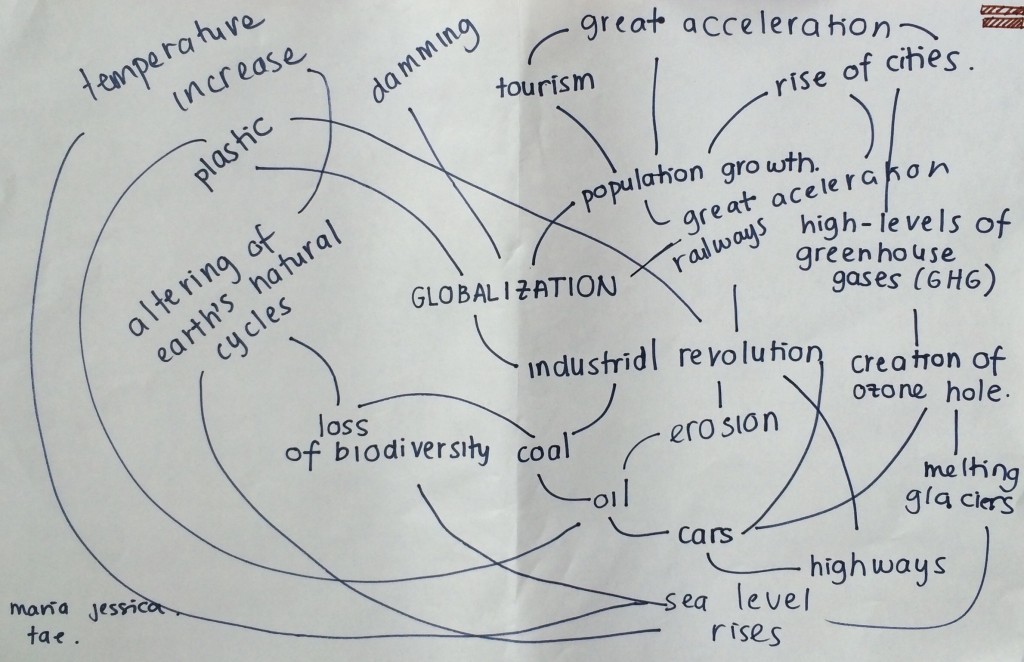

Vocab_exercise for placing vocabulary and drawing in relation to the geologic timescale/Anthropocene.
>> 3 selected course readings and/or videos with accompanying worksheets/materials to support comprehension that include:
Getting to Know Climate Change (two videos from PBS) with prompt questions.
Future States: Plastic Bag, narrated by Werner Herzog (18:00 mins video) I ask students to make a drawing while watching this video, documenting each “interaction” the bag has with people, animals or natural forces. The drawings can get very complex. We then talk about what it means to use plastic in design projects. And our complex relationship to plastic in daily life.
After Hurricane Sandy, New York Rebuilds for the Future – The New York Times (numbered PDF). supporting in-class document(pdf).
Enter the Anthropocene, Age of Man, Elizabeth Kolbert (numbered PDF). National Geographic
>> List suggested readings/videos that will help other LS teachers see the length, text type, and topic that is appropriate for an LS section.
READINGS:
Toyo Ito, ‘Postcript‘, from Project Japan (support document)
excerpt (list on p.178 ) from Depletion Design: Glossary Networked of Ecologies, support document “Wicked Problems“
(2-3 page excerpts) from Vibrant Matter, A Political Ecology of Things, Jane Bennett. Typically done in relation to the course themes of materials (‘thing power’) and energy (the grid), and trip to Freshkills (Robert Sullivan quote).
AUDIO:
One Small Observation (New Tech City) “Noticing — it’s step one to creating something.” (7:00 mins)
Forecast Calls for More Rain than We can Handle, WNYC 2050 (4:00 mins)
A Shift to Humility: Resilience and Expanding the Edge of Change, Andrew Zolli (first 2:00 minutes)
Warning Signs, Studio 360 (Yucca Mountain) (6:21 mins)
Building For Birds, Architects Aim for Safer Skies WNYC (7:48 mins) (Highline/wicked problems)
VIDEOS:
Welcome to the Anthropocene (3:38 mins)
Manufactured Landscapes trailer (2:03 mins)
Sara Sze Art 21: Improvisation and Balance (observation)
Translating Climate Change to Music (5:20 mins)
Big U DryLine (4:18 mins)
Retreat from the Water’s Edge, New Yorker Magazine (Staten Island Buyouts) (12:28 mins)
Living City: A Billion Gallons a Day (6:35 mins)
Living City: Rebuilding after Hurricane Sandy (6:00 mins)
Newtown Creek Digester Eggs: The Art of Human Waste | David Leitner (3:25 mins)
Newtown Creek’s Champion | NY York Times (3:45 mins)
>> 1 full class session outline as an example of how to structure the time block in a varied, skills rich, interactive and supported way.
Integrated LP folder (zipped) Anthropocene
Grammar-focus LP folder (zipped) Wicked Problems
Grammar-based LP folder (zipped) BIG U and NYC 2050
>> 1 Writing assignment, including:
– For LS sections I’ve shifted from long-form written reflections and essays to shorter posts on student Learning Portfolios and entries in Field Notebooks. On a weekly basis students observe a site, record data and write observations. (Download PDF of Field Notebook brief here: FNBK_Fall15).
– All projects and crits include reflective exercises, along the lines of: “Reflect on how your Anthropocene project was received in class. Did you enjoy this project? What would you do differently next time?”
– During our first class all students complete an introductory survey.
– After our first meeting (week 1) I have students post a response, on their Learning Portfolio, to the following prompt. They then revisit and update this entry at week 14.
Week 1 assignment:
1) What three characteristics do you think are most important for artists/designers to have when designing for ever-changing conditions? (what kinds of skills and personalities traits should they/you have?)
2) What kind of projects can you imagine designers working on that would require these skills?
Week 13 assignment:
Revisit the three characteristics that you think are most important for artists/designers to have when designing for ever-changing conditions. Update these characteristics in reflection of the course themes and experiences. If you feel they are the same, say why.
A more traditional writing assignment includes:
- model essay
- graphic organizer
- clear assessment criteria
- checklist for student to review own work
>> 1 example of a rubric for grading a project, presentation or paper. (assessment criteria must be VERY clear).
Please see Anette Millington’s rubrics via the CUE Learning Portfolio Faculty Resource Guide (pages 16-19).
I have also found it useful to use Canvas’ rubric for developing simple and quick rubrics for student projects throughout the semester:
